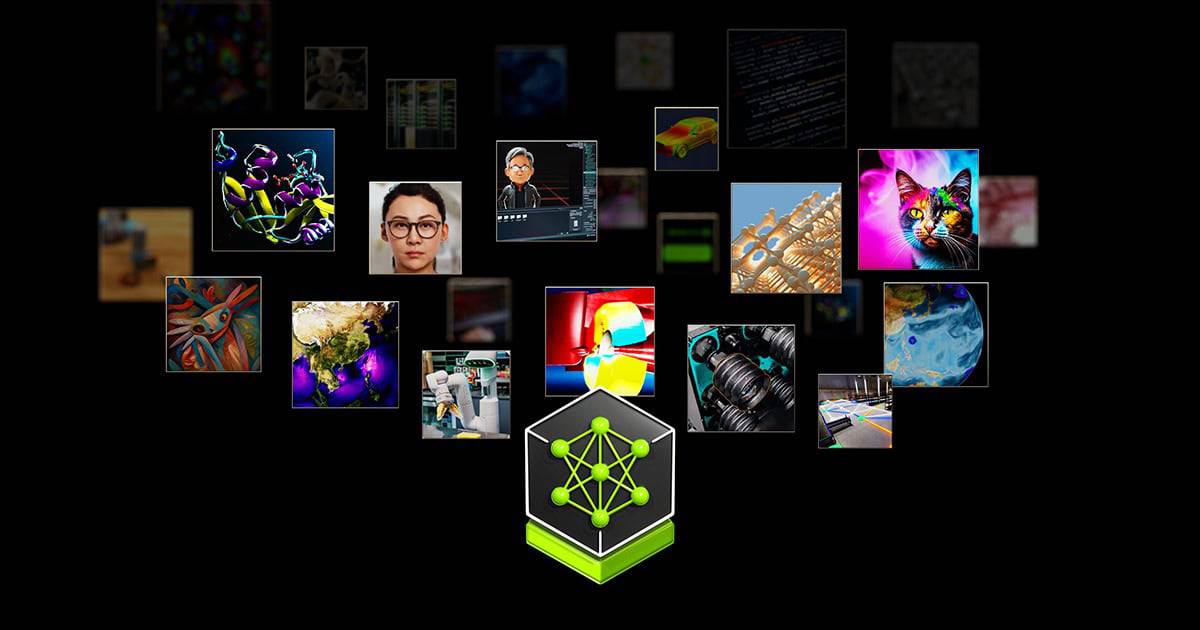NVIDIA Audio2Face beta is a tool that uses AI to create facial animations from audio. It can sync 3D characters’ facial movements with voice tracks for games, movies, digital assistants, and other projects that require realistic facial animations. By simplifying the creation of expressive facial animations, Audio2Face makes it accessible to both experienced animators and beginners. The app can analyze audio in real-time or be used to create animations ahead of time. It is part of NVIDIA’s Omniverse platform, which supports different output formats and enables facial movement transfer between characters. Audio2Face is still in beta but shows promise for streamlining character animation workflows.

Audio2Face: The AI-Powered Revolution in Facial Animation
What is NVIDIA Audio2Face?
NVIDIA Audio2Face is a groundbreaking AI-powered application that simplifies and enhances the creation of facial animations. It leverages deep learning to automatically generate realistic facial expressions and lip movements from audio input. This technology streamlines the animation workflow, making it accessible to a broader range of creators.
How Does NVIDIA Audio2Face Work?
Audio2Face utilizes a pre-trained deep neural network (DNN) to analyze audio input and map it to corresponding facial movements. This DNN has been trained on a massive dataset of facial expressions and audio recordings, enabling it to accurately interpret emotions and speech patterns. The output of the DNN drives the 3D vertices of a character’s face mesh, resulting in real-time facial animation.
Key Features and Benefits
- Ease of Use: Audio2Face simplifies the animation process, requiring minimal manual intervention. Users can quickly generate high-quality facial animations without extensive animation expertise.
- Real-Time Performance: The application delivers real-time facial animation, making it ideal for interactive applications like video games and virtual reality experiences.
- Customizable: Audio2Face offers various customization options, allowing users to adjust the intensity of emotions, retarget animations to different characters, and even control individual facial features.
- Versatile: The technology supports a wide range of languages and can be applied to both realistic and stylized characters.
- Integrates with Omniverse: Audio2Face seamlessly integrates with NVIDIA’s Omniverse platform, enabling collaboration and workflow optimization for 3D content creation.

Applications of Audio2Face
Audio2Face has a wide range of applications across different industries:
- Game Development: Creating realistic and expressive characters for video games.
- Film and Animation: Enhancing facial animation in animated films and visual effects.
- Virtual Reality: Bringing virtual avatars to life with natural facial expressions.
- Digital Assistants: Improving the realism and engagement of virtual assistants.
- Content Creation: Simplifying the creation of animated videos and presentations.
Comparison Table: Audio2Face vs. Traditional Methods
| Feature | NVIDIA Audio2Face | Traditional Methods |
|---|---|---|
| Ease of Use | High | Low to Medium |
| Real-Time Performance | Yes | Limited |
| Customization | High | Medium |
| Versatility | High | Low to Medium |
| Integration with 3D Tools | Yes | Varies |
The Future of Facial Animation with Audio2Face
NVIDIA Audio2Face is poised to revolutionize the animation industry by democratizing the creation of high-quality facial animations. As the technology continues to evolve, we can expect even more realistic and expressive characters in video games, films, and virtual experiences. Audio2Face represents a significant step forward in the evolution of animation technology, empowering creators to bring their stories and characters to life with unprecedented ease and realism.

Key Takeaways
- Audio2Face uses AI to create facial animations from voice tracks
- The app works in real-time or for pre-made animations
- It supports various output formats and character transfers
Core Technologies and Algorithms
NVIDIA Audio2Face uses advanced AI to turn speech into realistic facial animations. It combines deep learning with audio processing to create lifelike expressions and lip movements.
Underlying AI Models and Machine Learning Techniques
Audio2Face relies on neural networks trained on large datasets of human speech and facial movements. These networks learn to map audio features to facial expressions. The AI models can pick up on subtle voice cues like tone and emphasis. This allows them to generate natural-looking animations that match the speaker’s emotions.
The system uses several AI techniques:
- Convolutional neural networks to analyze audio waveforms
- Recurrent neural networks to track speech patterns over time
- Generative adversarial networks to create realistic facial movements
These work together to produce smooth, believable animations in real-time.
Facial Animation Through Audio
Audio2Face turns speech into facial animations in a few key steps:
- It breaks down the audio into small segments
- It analyzes each segment for pitch, volume, and other features
- It maps those features to specific facial movements
The system can animate many parts of the face including:
- Lips
- Cheeks
- Eyes
- Eyebrows
It syncs lip movements precisely to match the speaker’s words. It also adds subtle expressions to convey emotion. The animations can be applied to 3D character models in real-time. This makes Audio2Face useful for games, movies, and virtual assistants.
Implementation and Usage
Nvidia Audio2Face offers a powerful tool for facial animation. It needs proper setup and careful data handling.
Setting up Audio2Face in Nvidia Omniverse
To start using Audio2Face, install Nvidia Omniverse on your computer. Open the Omniverse launcher and find Audio2Face in the app list. Click “Install” to download it.
Once installed, launch Audio2Face. You’ll see the main workspace. Import your 3D character model into the scene. Make sure it’s in a format Audio2Face can read.
Next, load your audio file. The app works with common audio formats like WAV and MP3. Click the “Audio” tab and choose your file.
With the model and audio ready, click “Generate” to create the facial animation. Audio2Face will analyze the sound and move the character’s face to match.
You can fine-tune the results using sliders and controls in the app. Adjust lip sync, eye movement, and other facial features as needed.
Data Handling and Security Considerations
Audio2Face deals with audio and 3D model data. It’s important to handle this data safely.
Don’t use copyrighted audio or models without permission. This could lead to legal issues.
Keep your work private if it contains personal information. Audio2Face doesn’t share your data, but be careful when saving or sharing your projects.
For client work, get clear consent before using anyone’s voice or likeness. This protects you and respects others’ privacy.
Test your animations thoroughly before publishing. Sometimes the AI can produce odd results. Catching these early saves time and avoids problems.
If you’re worried about privacy, work offline when possible. This limits data exposure to just your local machine.
Frequently Asked Questions
NVIDIA Audio2Face is a tool for animating 3D character faces using audio. Users often have questions about how to get started and use the software. Here are some common queries and answers.
How can I download Nvidia Audio2Face?
You can download NVIDIA Audio2Face from the NVIDIA Omniverse website. Go to the Downloads section and look for Audio2Face. You’ll need to create an NVIDIA account if you don’t have one already.
What is the pricing structure for NVIDIA Audio2Face?
NVIDIA has not publicly shared pricing details for Audio2Face. The tool is currently in beta. Users should check the NVIDIA website or contact sales for the most up-to-date pricing info.
Does NVIDIA Audio2Face have an API for developers?
NVIDIA has not announced a public API for Audio2Face. The tool works within the Omniverse platform. Developers can use Omniverse’s USD framework to work with Audio2Face animations.
Is Nvidia Audio2Face available for free or is there a trial version?
NVIDIA offers Audio2Face as part of Omniverse. There is a free 90-day trial of Omniverse for individual creators. This trial includes access to Audio2Face. Users can test the tool before buying.
Where can I find the Audio2Face tool on GitHub?
Audio2Face is not open-source software. NVIDIA does not host it on GitHub. The tool is part of the closed-source Omniverse platform. Users must download it through official NVIDIA channels.
How does NVIDIA Audio2Face integrate with Unreal Engine and metahuman?
Audio2Face can export animations to Unreal Engine. Users can apply these animations to metahuman characters. The process involves exporting from Audio2Face and importing into Unreal Engine. NVIDIA provides guides on their website for this workflow.







